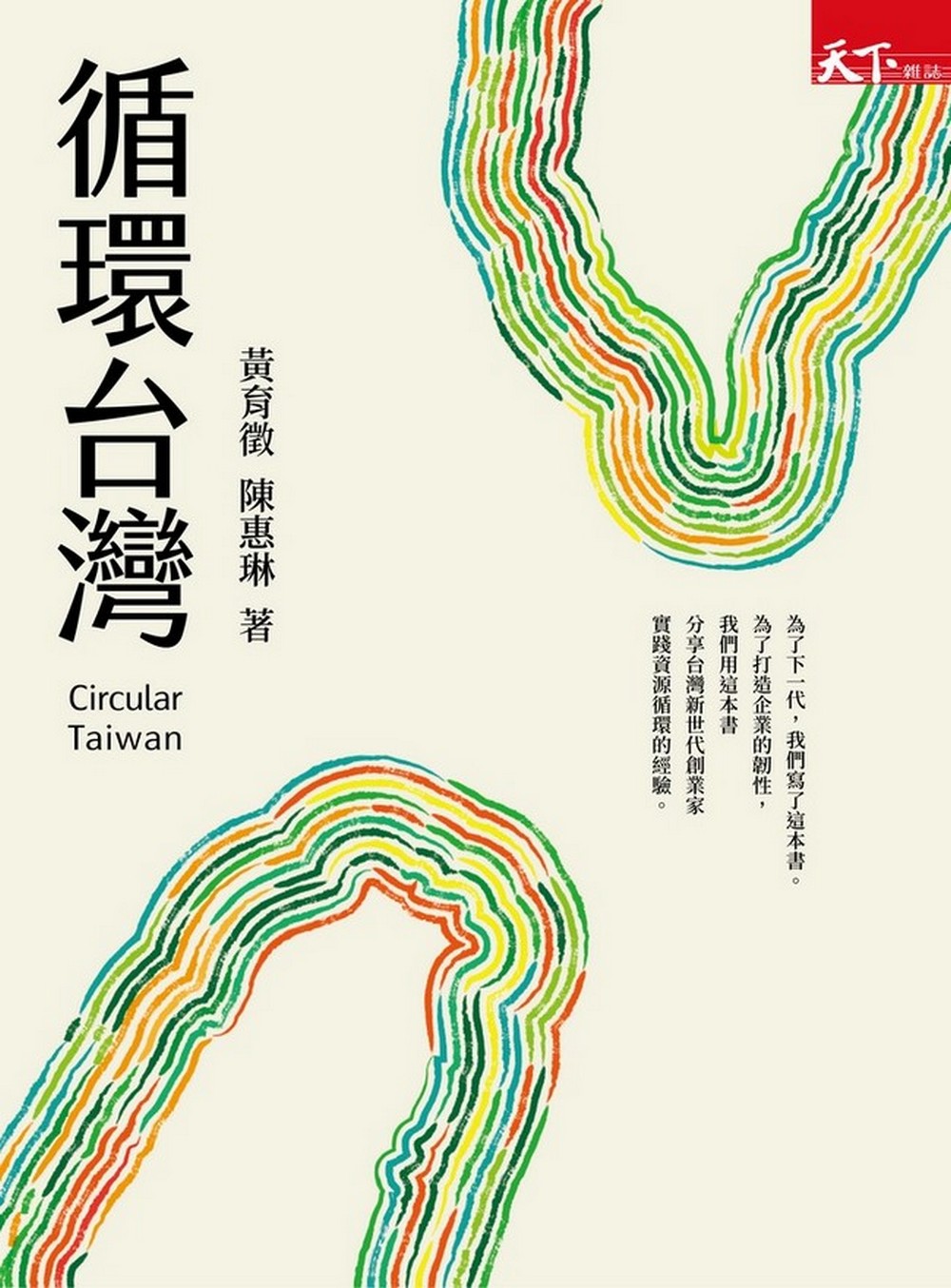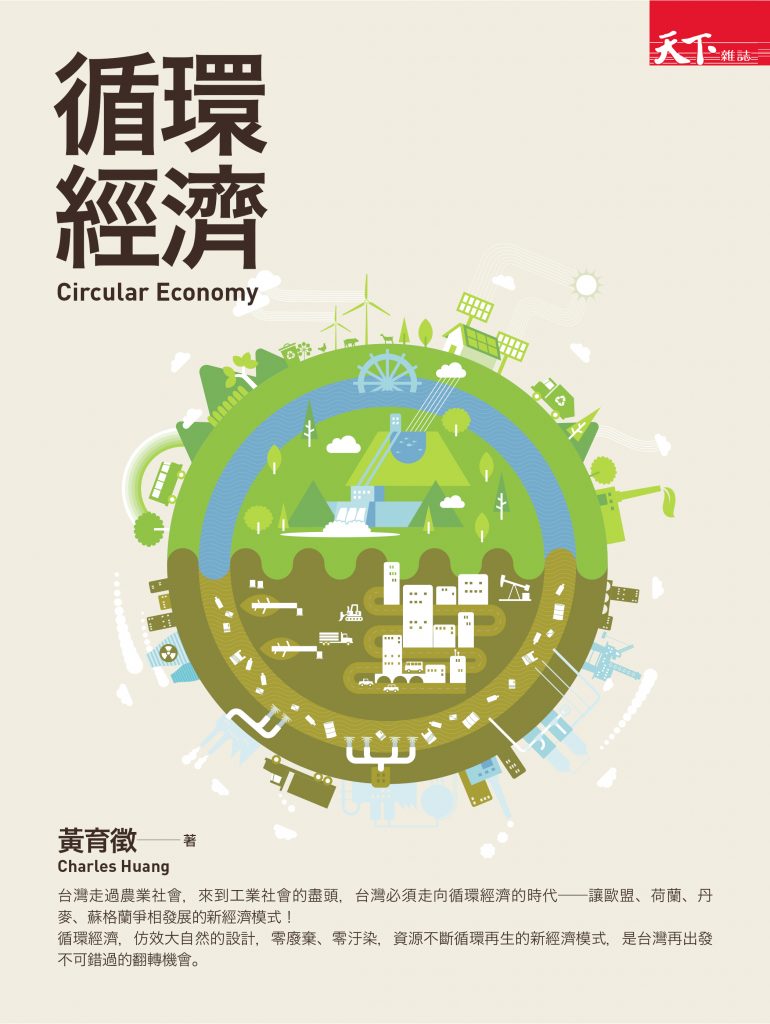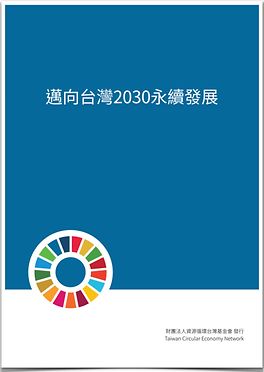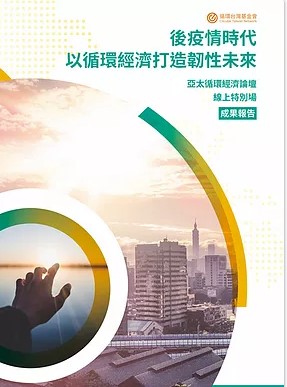This book is written for the next generation.
To create industry resilience, this book shares the experiences of a new generation of entrepreneurs who are practicing resource circulation in Taiwan so that others may learn from them.
Circular Taiwan 2040 - towards a resilient and sustainable economy
While linear economy has brought our economy, ecology, environment, and even politics into thorny and muddy disputes, circular economy opens a door full of new opportunities that allows us to use our imagination and explore other possibilities.
Since the publication of Circular Economy in 2017, circular economy has become a well-recognized phrase amongst government officials and industry insiders. Within a few years, the seeds of Taiwan’s circular economy have already developed into promising sprouts, with unique cases springing up in every industry. Taiwan has carved out its own path towards the development of a circular economy with its own stories to tell.
To accelerate society’s overall transformation, Circular Taiwan Network designed this book, using clear and simple structures, to explain the inner workings and values of a circular economy. The book also illustrates the experiences of Taiwan companies practicing circular economy.
Many people ask, “How do you achieve a circular economy?” There is no one clear answer, but many different strategies. This book highlights examples from the three main principles of circular economy, granting readers insights into the practitioners’ motivations, strategies, and experiences. At the same time, the book invites readers to think about the Circular Taiwan 2040 vision. In twenty years, within one generation, one can break through the existing structures and create a resilient and sustainable economic model for the next generation.
This book is suitable for companies that are eager and looking for opportunities to promote circular economy. It is also suitable for anyone who cares about the future development of Taiwan.
Reading Circular Economy can help you:
- Understand how circular economy can help companies become more resilient towards future trends and risks
- Think about how to create long-term benefits using circular economy in the midst of future uncertainties
- Incorporate circular economy thinking into company culture and value. Let decision makers, managers, and workers see new potentials and imagine a more positive future.
- Consider the benefits created by a circular economy in a systematic way, from industry, to social, and national levels.
About the Authors
Mr. Charles Huang, Chairman, Circular Taiwan Network
Mr. Huang firmly believes that a circular economy is the most important token of care and promise that we can leave for the next generation.
Mr. Huang was the former chairman of Taiwan Sugar Co, Ltd, former Chairman and Chief Executive Officer of TSRC Corporation, and former Executive Director of the Industrial Technology Research Institute. He has also served as an advisor and director for various legal foundations and companies. Mr. Huang has a Bachelor of Chemistry from the University of Pennsylvania and a Masters of Business Administration from the Wharton School of Business.
Ms. Shadow Chen, Chief Executive Officer, Circular Taiwan Network
“Be the change you wish to see” has always been Ms. Chen’s motto.
Ms. Chen was the former Secretary-General of the Taiwan Permaculture Institute, a former industry designer, and a former travel writer. She is an avid explorer. Ms. Chen holds a double masters degree in industrial ecology from Leiden University in the Netherlands and University of Graz in Austria. In 2017, Ms. Chen was awarded the Hans Roth Environmental Prize.
Circular Taiwan Network
Collectively working towards the vision of “let circular economy become a daily practice,” the Circular Taiwan Network staff is committed to promoting the transformation of Taiwan's industry and society, and helping Taiwan become a leader in the world's circular economy. Circular Taiwan Network staff members include: Erica Tian, Joy Chou, Esther Tung, Cheetah Liulee and Yashuan Tsai.
Circular Economy has Received Positive Reviews from the Following Individuals
Purchasing Options
To purchase an electronic copy of the book, please click here.
Hard copies of the book are only available for purchase in Taiwan.
Briefing Sessions
If you or your organization would like to receive a special presentation of the contents of Circular Economy followed by a face-to-face brainstorming session, Circular Taiwan Network can organize a specialized “An Encounter with Circular Economy” briefing session for you. To ensure that everyone understands how to work together, government officials and supply chain partners are encouraged to participate in these sessions so that everyone can get a better understanding of how to work together in a circular economy. For more information regarding the briefing sessions, please click here.
Main Contents of the Book
Circular Taiwan is the second book published by Circular Taiwan Network. The first book, Circular Economy, introduced the concept of circular economy and presented international case studies to the Taiwan community. Circular Taiwan shares the inner workings and strategies of over 50 Taiwan businesses that have developed a circular economic operation in line with Taiwan’s industrial and social cultures.
What happened? Why does the current set-up need to change?
The environment is in a dire situation due to human activities. To ensure the sustainability of the planet, environmental regulations have become stricter, markets are changing their behaviors, and more focuses are put towards environmental, social, and governance (ESG) investments.
Chapters 1 - 3 analyzes the tremendous changes in the environment and how it affects companies, as well as how companies can increase their abilities to address environmental and societal externalities.
What strategies could be employed to promote circular economy?
Chapters 4 - 6 focuses on the three strategies that could launch a circular economy - high value utilization, product as a service, and systems collaboration. The various examples listed in this section will not only help readers understand the concept, but also connect theories to practical applications. They can also help readers identify ways in which they can practice circular economy on a personal level.
How can businesses use circular economy to create opportunities?
Chapter 7 - 9 details how the agriculture, construction, and textile industries were able to transform their operations as blueprints for how other industries can transition to a circular economy. This section also helps readers think through the possibility of connecting supply chains and cross-sector opportunities.
How to envision a Circular Taiwan?
Chapter 10, “Action by All,” divulges the mindsets of business leaders, government officials, and civil society stakeholders along with their leverage points. It proposes the creation of a “circular circle” that can unite various aspects such as materials, knowledge, and finance. It also suggests that Taiwan resets its competitiveness and creates an industry for the next generation.



